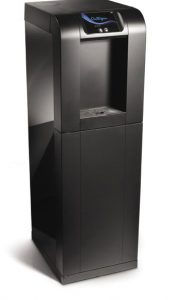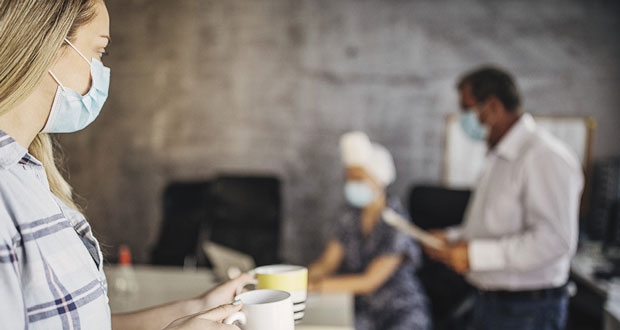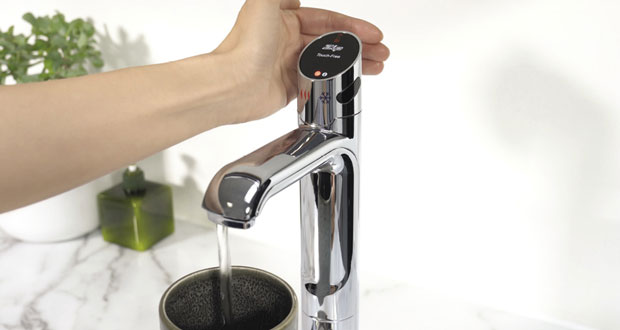SUSTAINABILITY
One area however, which has never changed through lockdown has been FM’s responsibility for sustainability. As a panellist remarked: “Sustainability has never gone away, though it might have been drowned out by everything else that’s been going on. Employees do not view sustainability as something which is ‘nice to have”. This is why organisations are keenly aware that a robust sustainability programme can help make an organisation an employer of choice. For many workers, if their office isn’t banning single-use plastic or running a sustainability programme, that could be an issue.
When it comes to sustainability, Dan Johnson cited the growth in popularity of wider sustainability and wellbeing accreditations such as the Well Building Certificate, which concentrates on how environmental factors affect occupant wellbeing.
“For Zip Water it’s specifically the provision of reusable bottles and easy access to water. One of our flexible office space clients provides occupants with a utility bottle with all their kitchen and break out areas fitted out with reusable bottle fillers that dispense chilled and sparkling water. The thinking is to remove people’s desire to buy water and spend their own money on single-use plastic.”
The panel agreed that to hit specific targets such as moving to a carbon neutral energy supply and a zero-waste target, they need to ensure all their staff are on board. Ingenuities range from designing the workplace to make it much more convenient to recycle than throw rubbish in the bin, to introducing a range of strategies to encourage staff to hit green targets.
The use of green champions is a popular approach, alongside a level of competition amongst teams, for instance the one with the highest level of recycling wins a prize. An FM told us: “For this year’s Earth Day we’ve sent out a biodiversity infographic, so people know we’ve got a range of sustainability plans. We believe helping people understand the purpose of sustainability strategies helps change behaviours. It’s all about education, information and making it fun.”
FUTURE PLANS
Johnson points out: “The WELL Building Standard encompasses other areas such as the volume of light into an area, and the provision of ergonomic desks and standing desks. People do thrive when in a workspace that supports their wellbeing and with COVID showing that people can work from home if the need to, we’ve got to make the office environment appealing.” So how did the panel feel the workplace will develop over the coming months?
Our FMs agreed they were viewing the gradual end of lockdown as the opportunity to reflect on what their people want, with the proviso that many might not actually know what they want until they return to the workspace.
“What we do know is that they miss collaboration and more junior members miss the mentoring they can get from informal chats. We want to bring people back together either formally or informally but we do see a hybrid approach with an investment in tech, and a bit more of a ‘resimercial’ feel. If people choose to come into the office just once or twice a week we want their return to make them feel energised. Ultimately, we want to design a space that grows with us in our journey back into the workplace.”
According to Jason Lee: “Ours is a two-fold process, as we’ve office based and field staff. The sales guys on the road will be carrying out more face-to-face meetings, and we will be encouraging them to get back to normal and ignore some of the more extreme predictions for the future of the workplace, when none of us have never been through something like this before.” He suggests, that it’s important to note the circumstances will be different for every organisation.
Amongst the rest of the panel, many were intending that their office space wouldn’t be changing back to anything like ‘normal’ for the rest of the year. But despite the pandemic, they did aim to “try and get rid of the black and yellow tape while educating people on maintaining social distance and making it welcoming as we can”.
Some of the FMs in the group did not expect all their people to be back in the office until September with some rolling new collaborative spaces which were installed during the pandemic. “We want to let people start to use the space; working from the office and remotely and check if we’ve the right mixes of spaces. I predict it will be eight months to a year until we’ve got the right data for the next phase.”
 Many of the group were aiming to take a soft landings approach, aiming to validate and study how people were working before making any wholescale changes. “We’re aiming for two days a week commitment,” said a panellist, “and from that glean the level of collaboration with colleagues and clients as well as the social element.
Many of the group were aiming to take a soft landings approach, aiming to validate and study how people were working before making any wholescale changes. “We’re aiming for two days a week commitment,” said a panellist, “and from that glean the level of collaboration with colleagues and clients as well as the social element.
“There are a lot of experts on LinkedIn who will tell you exactly what to do, but we think we’re better off taking our time and studying the situation so as we get further down the track, we see it as an evolution from where we are today in our COVID-secure bubbles, into hybrid workings and what can be done with our offices to make them more supportive.”
This focus on new behaviours was a recurring theme, as most of the panel didn’t want to use the office the way they did previously; for instance recurring room bookings for a weekly catch up, when their building has plenty of spaces for informal meetings, including sofas, brainstorming rooms and break out areas.
It was also mooted that the hybrid working pattern could ensure that staff are much more focused when they are in the office, “so there’s a purpose to be being there compared to working from home”. Some were also introducing staggered starting times to ease congestion and utilising hitherto neglected areas of the building, for instance a roof garden for work meetings.
For Dan Johnson at Zip Water: “In our offices we have additional people moving back in who have been working from home and we’ve taken the time to talk to them about their emotions and feelings about being back in the workplace.
“While we are taking the steps to do this with our own offices, in terms of clients we are looking at working patterns and how their staff can be kept happy. It all comes down to a diversity of needs within organisations to decide what to offer in their buildings and deliver a solution that helps meet plans for how they want to move forward. For FMs it’s about encouraging staff who want to contribute to the business, and for us we need to give our customers options within an environment none of us expected.
“This means putting in the time and resources to listen to what people want, and supporting the delivery of an optimal office space.”
- Moderated by FMJ Editor, Sara Bean
- Dan Johnson, National HydroCare Manager – Zip Water
- Jason Lee, National Sales Manager – Zip Water
- Eniitan Page, Head of Real Estate and Workplace, Brooks Macdonald
- Jo Newman, Senior FM Munich RE
- Chris Broham, Head of Facilities, RJ O’Brien
- Simon Booth, Head of Facilities, Kingston Smith LLP
- Tolga Salih, Property Facilities Manager, City of London Corporation
- Tim Rose, Global Facilities Director, Elekta
- Janet Lemon-Merrall, Facilities Manager, Independent Parliamentary Standards Authority
- Natalie Allerton, Head of Facilities, Jagex






